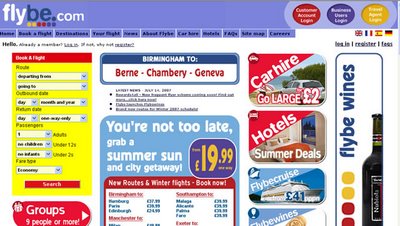Champagne in crisis? (Updated)
[Note added later: for a thorough review of this issue, including some important corrections to the information here, you should read the comments below, and also this article just posted on Jancis Robinson's website. JG, 10/09.]
There's a great piece in the Guardian about the issues facing Champagne, which quotes both Adam Lechmere and Robert Joseph. The key issues:
- Champagne sales are down (exports down 45% in the first half of 2009 versus 2008 figures)
- This year, growers are only going to be allowed to pick about half their grapes, leaving the rest on the vine, in attempt to reduce supply to keep demand high
Effectively, Champagne is a brand, and one of the rules of brand management is that you shouldn't kill your brand by discounting it.
Yet the sorts of market manipulations attempted by the Champenois make me feel uncomfortable.
The horror scenario for Champagne is that consumers should lose the perception they have that Champagne is special and worth a huge premium over other sparkling wine styles. What if consumers decide that it's fizz they want, not Champagne, and they can get fizz that ticks all their boxes from other regions?
With Champagne producers committed to protecting their price points through regulating supply, this creates an opportunity for sparkling wines from other regions.
Would it be so disastrous if Champagne were to win new consumers with £10 supermarket own-label Champagnes, £15 Grand Marques, and more prestige cuvees kicking in at £30? Lower margins but increased volumes might win customers who otherwise would shift to discover other sparkling wine styles.
Labels: business, Champagne, sparkling wine

 The web log of wine journalist Jamie Goode. Feel free to nose around; your comments are welcome
The web log of wine journalist Jamie Goode. Feel free to nose around; your comments are welcome 
